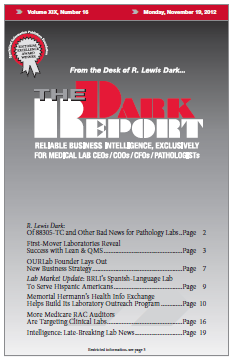CEO SUMMARY: There is good news for those clinical labs and pathology groups currently operating robust Lean, Six Sigma, and process improvement programs. The Institute of Medicine’s new report calls for all healthcare providers to rapidly transform themselves into ‘continuously learning’ organizations. These developments met with a welcome reception at the recent Lab Quality Confab, …
First-Mover Labs Reveal Success with Lean & QMS Read More »
To access this post, you must purchase The Dark Report.


